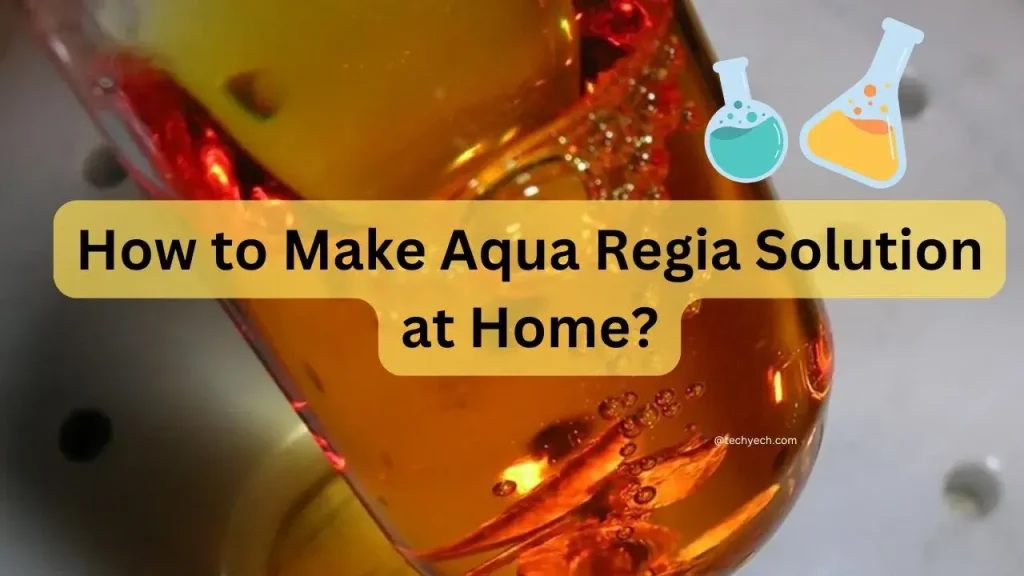Curious about the mysterious chemical that can dissolve gold? Meet aqua regia! Known as the “royal water” in Latin, this powerful solution has fascinated scientists and chemists for centuries due to its ability to dissolve noble metals like gold and platinum—metals that resist most other chemicals. But how do you create aqua regia safely at home? This step-by-step guide will show you how while ensuring safety remains your top priority.
What is Aqua Regia?
Aqua regia is a highly reactive mixture of two acids—nitric acid (HNO₃) and hydrochloric acid (HCl)—combined in a specific 1:3 ratio. This combination results in a liquid that can dissolve metals that would otherwise remain untarnished, such as gold and platinum.
Aqua Regia Formula
- 1 part nitric acid
- 3 parts hydrochloric acid
Its breakthrough ability to dissolve noble metals makes aqua regia invaluable in applications such as metal refining, laboratory cleaning, and intricate metal etching.
That said, it’s not something to be taken lightly—aqua regia is volatile and produces toxic fumes, so handle it with extreme caution. Don’t worry; we’ll walk you through everything safely.
What Do You Need to Make Aqua Regia at Home?
Before we get started, you’ll need a few essentials. Importantly, most of these items are likely already familiar if you’ve worked with chemicals before.
Materials Needed
- Concentrated Nitric Acid (HNO₃): Obtain from a trusted chemical supplier.
- Concentrated Hydrochloric Acid (HCl): Similarly, ensure you purchase this from a reliable source.
- Safety Gear
- Chemical-resistant gloves
- Safety goggles
- Respirator mask (to avoid inhaling harmful fumes)
- Glass or Chemical-Resistant Container: Plastic containers are not suitable as aqua regia is highly corrosive.
Now that you’re equipped, let’s move to the fun (and critical) part—crafting aqua regia safely.
Also Try – DIY Beetroot Powder at Home
How to Make Aqua Regia Solution Step-by-Step
Follow these steps carefully to ensure your safety and create an effective solution.
1. Prepare the Work Area
- Choose a Well-Ventilated Space
Work outdoors or under a proper fume hood to avoid inhaling toxic gases, such as chlorine and nitrosyl chloride. I personally prefer working outdoors when handling aqua regia—it’s safer and far more comfortable.
- Clear the Area
Remove anything flammable or reactive nearby to prevent accidental reactions.
2. Measure and Mix the Acids
Here’s where the chemistry magic happens! Follow these specifics to mix the acids correctly.
- Use the Right Ratio
Aqua regia requires 1 part nitric acid to 3 parts hydrochloric acid. For example, if you’re using 10 mL of nitric acid, you’ll need 30 mL of hydrochloric acid.
- Add Nitric Acid to Hydrochloric Acid
Always slowly pour the nitric acid into the hydrochloric acid—not the other way around. This helps prevent violent reactions. Safety first!
- Stir Gently
Use a glass or chemically-resistant rod to mix the acids slowly and carefully.
3. Use the Solution Immediately
Keep in mind, aqua regia is highly volatile and starts breaking down almost immediately. For best results:
- Use the solution immediately after creating it.
- NEVER store aqua regia—it can become unstable over time and pose a serious explosion risk.
Now you have a working aqua regia solution! But what if nitric acid isn’t available? Don’t worry—we’ve got an alternative.
Suggested – Fixing Garage Door Springs Safely (DIY)
Alternative Method: Making Aqua Regia Without Nitric Acid
If you don’t have nitric acid, you can create a substitute using an oxidizing agent like urea. However, note that this method may not be as effective or reliable as using nitric acid.
Substitute Method Steps:
- Prepare a Mixture of Urea and HCl
Mix concentrated hydrochloric acid with a small amount of urea in a glass container.
- Allow Time for Reaction
The mixture should release nitrogen oxides, mimicking the function of nitric acid.
While this method works in some cases, it’s best to stick with traditional aqua regia for precise results.
Uses of Aqua Regia
Why go through the effort of making this volatile solution? Here are three major reasons scientists and professionals rely on aqua regia:
- Refining Metals
Aqua regia dissolves gold, platinum, and palladium, making it perfect for purifying these metals.
- Cleaning Lab Equipment
Stubborn metal stains on laboratory glassware? Aqua regia can remove them with ease.
- Etching Metal Surfaces
It’s also used to create detailed engravings or designs on metal.
Fun fact? Those precise gold patterns you see on circuit boards are often cleaned or shaped with aqua regia!
How to Neutralize Aqua Regia Safely
Now that you’ve finished using aqua regia, it’s crucial to dispose of it responsibly. Here’s how to neutralize it safely:
Steps to Neutralize Aqua Regia
- Add a Neutralizing Agent
Slowly pour sodium bicarbonate (baking soda) or a similar neutralizer into the solution.
- Wait for the Reaction to Subside
The mixture will bubble as the acid reacts and neutralizes. Wait until bubbling stops entirely.
- Dispose of the Neutralized Solution
Pour the now-neutralized solution into a non-reactive container and dispose of it in accordance with local chemical waste guidelines.
Quick tip—always wear gloves and goggles when neutralizing chemicals. Safety gear isn’t optional here!
Recommended – Make a Wind Vane at Home
Safety Precautions and Final Thoughts
Aqua regia might sound exciting—and it is!—but never forget that it’s a highly dangerous chemical. Always take these precautions:
- Wear proper safety gear (goggles, gloves, and a mask).
- Avoid working in enclosed or poorly ventilated spaces.
- Never store aqua regia due to its instability.
When in doubt, consult a chemistry teacher, professional, or experienced mentor. Chemistry can be a rewarding hobby, but your health and safety should always come first.
By following this guide, you now have the knowledge to make and use aqua regia safely at home. Whether you’re refining metals, cleaning stubborn stains, or just broadening your chemical skills, remember to prioritize safety and precision.
Happy experimenting!


